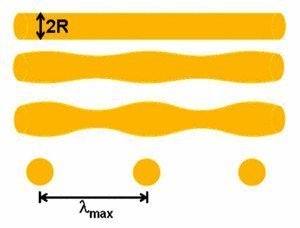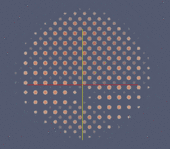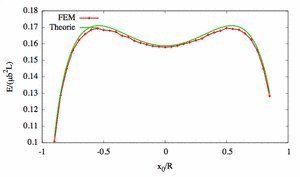Pattern formation in nanowires
We investigate the stability and dynamics of pine tree nanowires, i.e. nanowires which contain a screw dislocation. It induces a so called Eshelby twist of the entire wire. The dislocation is metastable in the center of the wire, and it influences the Rayleigh-Plateau instability, which favors decomposition of a long wire into droplets.

Fig. 1: Schematic decomposition of a nanowire into droplets with a preferred wavelength.
© Rainer Schulz, Max-Planck-Institut für Eisenforschung GmbH

Fig. 2: The screw dislocation is only metastable in a nanowire with the Eshelby twist and can therefore move out if it is located in the outer region of the wire. Simulation snapshot on the top view of a wire, using amplitude equations.
© Robert Spatschek, Max-Planck-Institut für Eisenforschung GmbH

Fig. 3: Energy of the twisted wire as function of the position of the screw dislocation. The center position is only metastable.
© Rainer Schulz, Max-Planck-Institut für Eisenforschung GmbH


